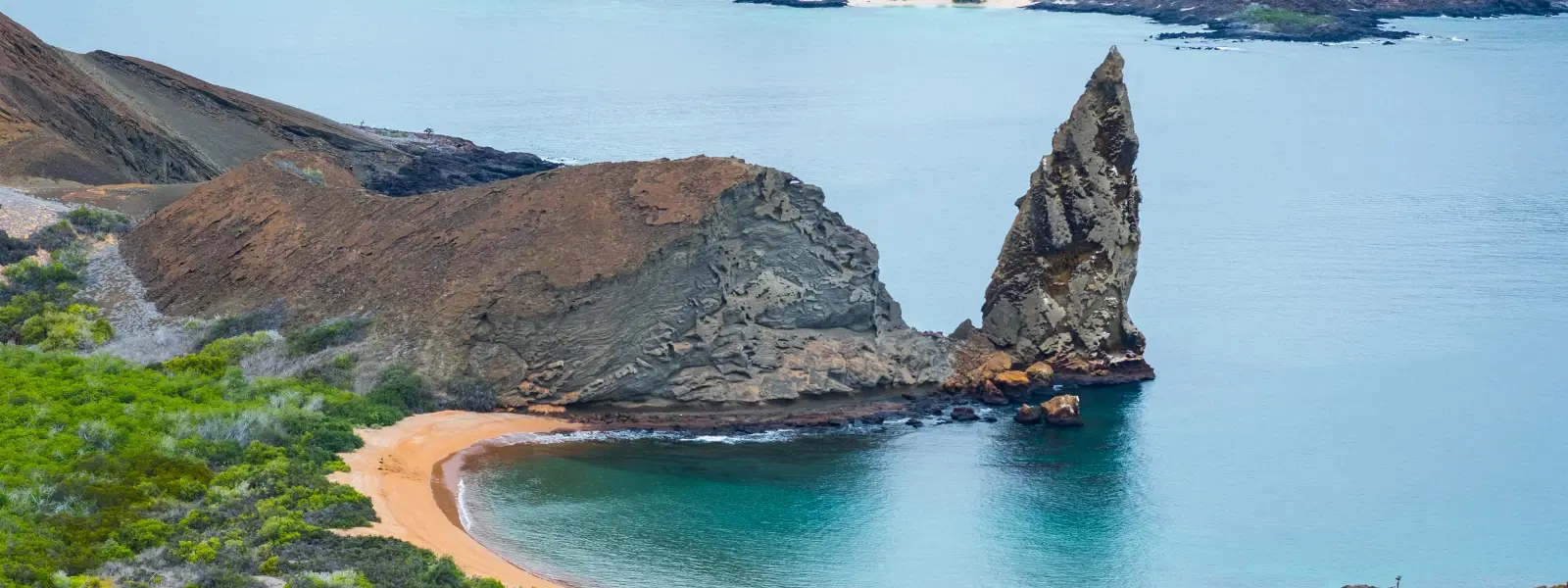
Hotels
•03 min read

Have you ever wondered where the Canary Islands are located and why they’re a favorite destination for travelers worldwide? Nestled in the Atlantic Ocean, these volcanic islands, which belong to Spain, boast a unique geography that bridges two continents and offers an array of natural wonders waiting to be explored. By reading this guide, you'll learn exactly where the Canary Islands are on the map, why their location is so strategically important, and what makes them a must-visit destination.
The Canary Islands are a fascinating group of volcanic islands situated in the Atlantic Ocean. As an autonomous community of Spain, these islands enjoy a distinctive status that blends European governance with a unique geographical twist. Their subtropical allure makes them popular among travelers, offering a mix of vibrant landscapes and inviting climates.
The archipelago is comprised of seven main islands: Tenerife, Gran Canaria, Lanzarote, Fuerteventura, La Palma, La Gomera, and El Hierro. Each island has its own unique charm—from Tenerife's dramatic volcanic landscapes to Fuerteventura's endless sandy beaches. This diversity in natural beauty provides visitors with plenty of options, whether you're seeking serene seaside relaxation or thrilling adventures across rugged terrains.
The Canary Islands are positioned off the northwest coast of Africa in the Atlantic Ocean. Geographically, they lie between 27° and 29° North latitude and 13° and 18° West longitude, which places them approximately 100 kilometers (62 miles) from Morocco. Although they are physically closer to Africa, their cultural and administrative ties with Spain define much of their character and charm.
These islands serve as a natural bridge connecting Europe, Africa, and the Americas. Historically, they have played a critical role in maritime trade routes and exploration, contributing significantly to trade and cultural exchanges. Their strategic position has made them a crossroads of different cultures and influences, adding layers of history and intrigue to their current appeal.
Did You Know? The Canary Islands are closer to Africa than mainland Spain, making them a unique blend of European and African cultures.

If you’re looking at a traditional world map, locate the northwest coast of Africa and search the Atlantic Ocean nearby. The Canary Islands appear as a small cluster slightly off the continent’s edge. Their distinctive shape and position make them relatively easy to spot once you know where to look.
Using digital maps can be even more straightforward. Simply type in “Canary Islands” in the search bar, and use features like the satellite view to get a detailed look at their topography. Digital tools highlight the archipelago’s proximity to Africa and Spain, emphasizing both its natural beauty and geographical importance.
The formation of the Canary Islands is rooted in volcanic activity. Their dramatic landscapes were shaped over millennia by eruptions and lava flows, a process that created stunning geological features such as Mount Teide on Tenerife. These volcanic origins contribute to the islands' rugged beauty and distinct terrain.
The islands enjoy a mild, subtropical climate characterized by warm summers and mild winters. This pleasant weather, with abundant sunshine throughout the year, makes the Canary Islands an ideal travel destination for Indians seeking a winter getaway or a year-round escape from the everyday hustle.
The appeal of the Canary Islands goes beyond their maps. Visitors are drawn to breathtaking national parks, pristine beaches, and quaint historic towns. The islands’ rich cultural heritage—a blend of Spanish influence with noticeable African touches—adds a unique flavor to every experience, from local festivals to traditional crafts.

When planning your trip to these enchanting islands, remember that the official currency is the Euro and Spanish is the primary language. For Indian travelers, the islands provide a comfortable mix of familiar conveniences and exotic allure. Local transportation is efficient, with options ranging from buses to rental vehicles ensuring that you can explore each island at your own pace.
The Canary Islands are part of Spain, although they are located closer to Africa.
Yes, the Canary Islands are generally safe to visit. Always check for travel advisories before planning your trip.
The Canary Islands are famous for their volcanic landscapes, subtropical climate, stunning beaches, and biodiversity.
Absolutely! The Canary Islands offer a unique blend of natural beauty, cultural experiences, and year-round pleasant weather.
There are seven main islands in the Canary Islands archipelago: Tenerife, Gran Canaria, Lanzarote, Fuerteventura, La Palma, La Gomera, and El Hierro.
The Canary Islands are a fascinating destination with a unique location near Africa, yet deeply tied to Spain. Their volcanic landscapes, subtropical climate, and rich cultural heritage make them a must-see on any traveler’s map. Whether you're exploring for a vacation or simply expanding your geographical knowledge, understanding where the Canary Islands are located is the first step to appreciating their incredible beauty and significance.